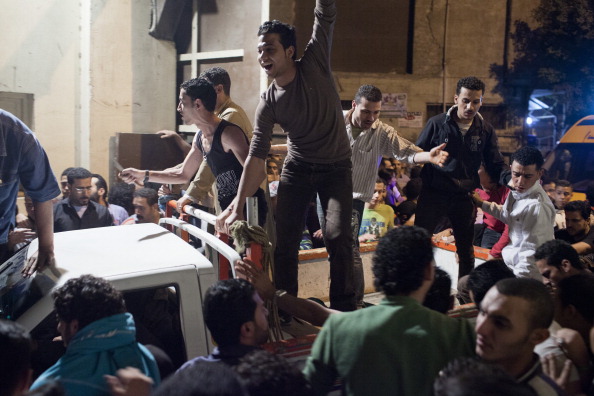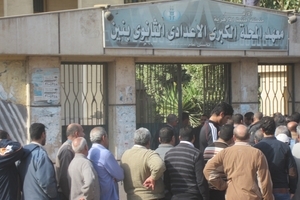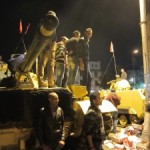
Egyptian protesters cheer as they enter the grounds of the St Mark’s Cathedral in Abasseyya during clashes with Egyptian riot police on April 7, 2013 in Cairo, Egypt (Photo Credit: Ed Giles/Getty Images).
By Diana Eltahawy, Amnesty International’s Egypt researcher
On Sunday I attended the Cairo funeral of four Coptic Christians killed on Friday night in Khousous, a small town north of the city.
I had been planning to travel to Khousous to find out more about the sectarian violence which led to the deaths there. Instead, I found myself caught up in more violence at the funeral itself – with mourners on one side, and unknown assailants and, later, security forces on the other.
Before the clashes erupted, feelings of grief, anger and injustice were palpable inside Saint Mark’s Cathedral in Cairo, which was filled with mourners. Tears, prayers and wailing were drowned out by chants against the government and the Muslim Brotherhood, and vows to avenge the dead.

